The Ministry of Defence is seeking industry input for the next tranche of its Autonomous Collaborative Platform (ACP) programme, aimed at delivering a new generation of uncrewed systems capable of operating alongside fourth-, fifth- and sixth-generation combat aircraft — and from Royal Navy carriers.
A Prior Information Notice (PIN) published by Defence Equipment and Support (DE&S) on 29 July sets out a two-year contract opportunity worth up to £20 million for what it terms Tranche 2 of the ACP effort. This follows the formal delivery of the RAF’s first ACP, the StormShroud Mk1, in May 2025.
The PIN states that the RAF’s Autonomous Collaborative Platforms Strategy, first published in March 2024, underpins the initiative. It defines a vision of integrating ACPs into the RAF’s future force mix alongside crewed aircraft within the Future Combat Air System (FCAS) and the Global Combat Air Programme (GCAP).
According to the notice, Tranche 2 ACPs must be “designed to operate in collaboration with the fourth-, fifth- and future generations of combat aircraft and to operate from the UK aircraft carriers.” This marks a significant ambition to extend uncrewed combat capabilities into the maritime domain, potentially operating from Queen Elizabeth-class carriers.
The 2025 Strategic Defence Review, published in June, described ACPs as central to the RAF’s transition from an exclusively crewed fleet, recommending that “investment in ACPs should be considered alongside investment in FCAS and GCAP.”
The ACP programme aims to deliver operationally useful systems that are increasingly autonomous, capable of conducting electronic warfare, surveillance, and strike missions, either independently or in support of crewed assets.
The notice was issued under the UK’s new Procurement Act 2023 as a UK1 pipeline notice. While it does not yet invite bids, it signals clear intent to engage with suppliers ahead of formal tendering. Delivery of Tranche 2 is projected between April 2027 and April 2029.


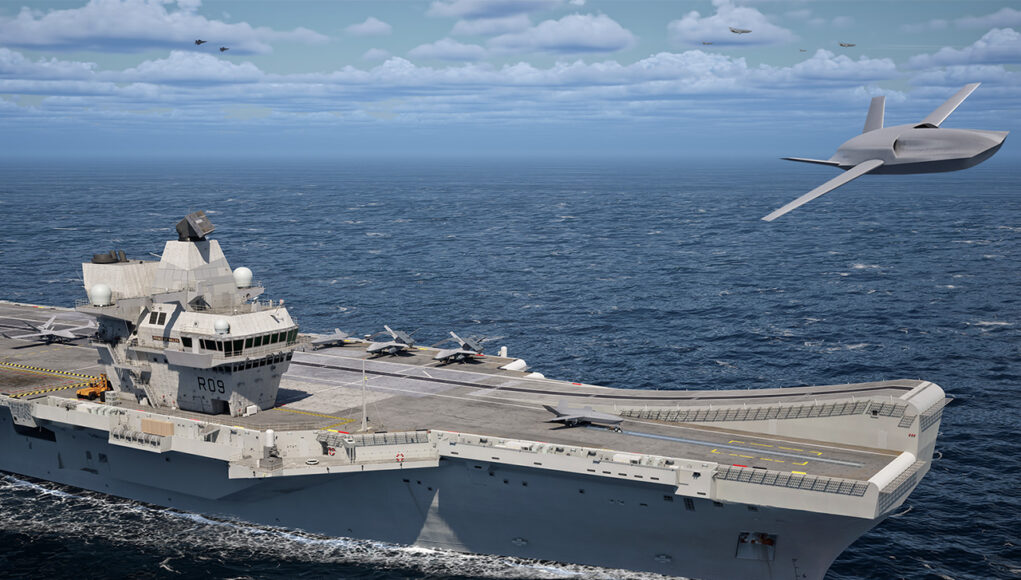
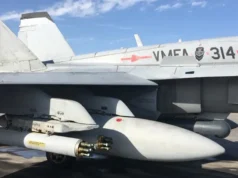

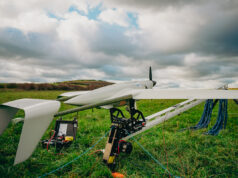
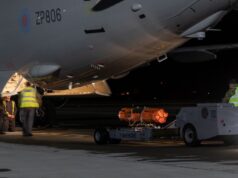
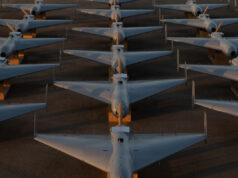
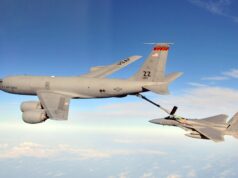
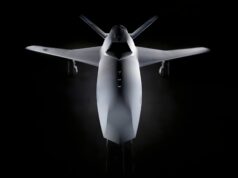

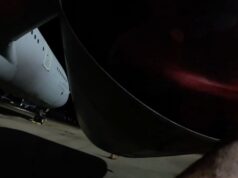
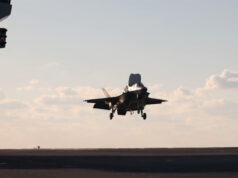

Interesting and probably good, but far too late. It is going to be many years before our carriers offer more threat than dropping bombs. We’ve seen years of posturing about our carriers, it seems to me that beyond the symbolic value they don’t offer much if fielded against ‘peer’ enemies. I may have this wrong but my understanding is that the F35 would have to get a lot closer to an enemy to drop a bomb than if they were using stand-off missiles. Thats not so much of a problem when you’re enemy doesn’t have layered anti-aircraft defences.
The F35 doesn’t yet have any stand off weapons.
Big question is do you want to use expensive storm shadow with typhoon or cheap paveway IV with F35.
We have zero plans to use Queen Elizabeth class in anti ship role.
Just because we have zero plans for it, doesn’t mean the role might one day be thrust on it.
I’d rather our carriers and their aircraft be equipped for any possibilities than risk being caught short.
Technically you can use Paveway IV as a stand-off weapon, but it still won’t have the same range as a JDAM. Which is where you do a toss bombing technique from 25,000ft or more. This will give the weapon an extended glidepath. But not the around 15 mile range of JDAM. Nothing stopping the MoD purchasing JDAM!
Due to the lethargic progress of getting Spear-3 integrated on the F35, the MoD are finally biting the bullet and looking to purchase the Stormbreaker GBU53 small diameter bomb. Which will give the aircraft a 40+ mile stand-off range against targets. The F35B as per the Spear-3, will be able to carry 4 SDBs in each weapons bay, along with a further 8 under each wing. for a total of 24 in Beast Mode.
Failing that the MoD could if required, purchase the US air to ground weapons already integrated on the F35, such as the advanced HARM, JASSM, and the SiAW.
What’s wrong with JSM – no brainer to me . Already in use with USAF, Norway, Australia on F35 and the Italians are buyng it for their ‘B’ s so the software fix seems good. Funny how Lockheed Martin have no problem integrating foreign weapons when USAF wants them too . Albeit like the Italians we would have to carry them externally ( at least till we get our ‘A’s but on the plus we could buy them and fly them now.
the US operate a fleet of over 1000 f-35s, of course their weapons will be prioritized over the UK which wants its own bespoke weapons that no other f-35 user utilizes.
That’s exactly my point, no criticism of the US at all . JSM is a Norwegian weapon designed and manufactured by Konigsberg but I believe also manufactured under licence in the US who also use the naval variant NSM as indeed do we. Most first tier partners who fly F35 also now operate it with JSM in including USAF so the software patch is done and it should be a quick fix to give our F35 a decent standoff weapon also enhancing Carrier Strike. Waiting for SPEAR until the 2030’s makes no sense at all and even then when it does arrive it’s got a comparatively limited standoff range and a much smaller warhead too. When the Aussies decided they needed to follow USAF and the Norwegians and get JSM for their F35 they seemed to manage to get the first batch front line in pretty much no time at all this because it had already been type certified and ready to go.
For 48 frames with little commitment to buy more and can’t focus on making the small investments for Tier 1 – let that lapse.
Unbelievable really when RAF have gone all in on F35.
Personally I think they should just buy some AGM-154 Joint Standoff Weapons until something better is integrated.. the real problem is there is very little of any options integrated with the f35 at present.. the US cannot us its best stand of weapons on the F35 at present either.
Kongsberg who designed and manufactured the NSM and JSM were a bit crafty. They have set up a manufacturing plant in the US in partnership with Raytheon. So they get the made in the US label, which I feel massively increases their position on the weapons integration list. All business is war after all!
Turkey has a stealth missile for the F35 that is internal. They developed it before leaving the program.
It’s my understanding that Paveway 4 has a range of 18miles+ which is slightly more than a standard JDAM, with JDAM ER getting to 50 miles.
If the RN and RAF wanted to get a reasonable stand of weapon for the f35b that was able to engage moving ships it could simply buy the AGM-154 Joint Standoff Weapon, it’s already Integrated has a 130km range and is actually really cheap.. at about 700,000 to 800,000 per shot, even better about 11% of the AGM 154 is built in the UK.
Still begs the question why in that event USAF have gone for JSM , also Italy and Japan are commited to JSM for external carriage on their ‘B’s and I believe that’s the plan with USMC. Can AGM154 be carried internally on the B ?
Hi pongoglo..completely agree JSM should be a no brainier purchase when it’s integrated, but that is a while away yet. Which is why a limited 50 unit AGM154 buy would be a good idea as at this moment it’s the only weapon integrated into f35 ABC that can actually formally hit a moving ship.
I know it AGM 154 can be carried and I think it’s internal integration as that was the work they did.
It’s also not so much of a problem when your carrier aircraft have all aspect stealth and are designed to operate in the most complex threat environments.
All good, but how long is it going to take before we actually get any stealth drones operating from the carriers?
Best bet would be just to take Taranis and shove its guts into a suitably-shaped and sized drone, then build them in numbers and do it quickly. All the tech for Taranis was developed; why not just use that rather than trying to reinvent the wheel?
That, and equip them with standoff weapons rather than freefall bombs. Do the same with the F-35s.
I don’t think they are looking at any stealthy drones. Our first ACP for RAF is propeller driven. Endurance is seen as more important than speed for jamming.
Decades.
This is £20 million for 2 years. Then what. Another? Then another? Then “informing future decisions” then more trials.
Sure, UCAV is a different kettle of fish than a Schiebel or other drones, but they follow exactly the same with those. Decades of trials, refuse to commit beyond a handful. Meanwhile, endless headlines which when you look beyond the spin amount to what exactly beyond money to the MIC.
Endless headlines, which is the primary intent while the forces continue to shrink.
In the real world.
The RFA has collapsed. Not a single stores ship or Amphibious asset remains in use at this time.
The MCMV “fleet” is a handful of toy boats that cannot deploy without mothers, which are where? RFA Stirling Castle is now HMS due to lack of RFA crew.
There was one SSN in use the other day.
And the QEC capability, which is excellent in so many ways, has a lack of Merlin and key weapons for its main weapon, F35.
Of course, this is hidden and Drones and autonomous are all in vogue.
Well said. I have just finished a book about WW2 battleships. The R class where the propulsiion system remained unchanged from when they were built in 1916 which meant that they couldn’t keep up with the fleet. The QE class were sound but were “wet” ships, not able to use a good part of their secondary armament and with decks often awash. Nelson and Rodney were compromises which meant that their AA fit, especially at the stern was poor. finally the KG 5’s, another compromise with the 14 inch guns constantly having mechanical and elevation issues. It’s great that we have improved so much isn’t it ? !!!!
There were @ 1000 RN Ships by the end of WW11 and it still wasn’t enough.
Now we can barely muster a dozen at best (most of them are Rivers).
I’m sort of Joking but sort of serious too.
Sadly there are some things they could have done to make the carriers a bit more effective.
1) AGM-154 Joint Standoff Weapon, this is actually cheap as chips has a Stand of range of 130km can be carried now by the F35b..50 million pounds would purchase 50..stick them on the carriers and you have a stand off airborne anti ship capable and stand off land attack capability. Even better 11% of it is built in the UK.
2) don’t buy 12 f35As that cannot be used on the carriers.. instantly increasing the availability of F35b
The Turks are ahead on this with their stealth unmanned Jet Kizilelma and Anka 3. Kizilelma is designed to take off from short runway carriers . Interesting Leonardo has partnered with Baykar on drones and they floated it could be a loyal wingman type for their GCAP as it’s stealthy and ahead of schedule of the program timeline.
Taranis last flew in 2014, technology has moved on since then. However, the prototype Taranis could be scaled up to be a more representative aircraft that meets the requirements, i.e. 10,000kg or higher. That includes a larger payload pay for a greater number and weight of weapons. There are some things that need sorting first before it can be used by a carrier.
Obviously first on the list is to beef up the fuselage and undercarriage, to cope with the shock and landing loads when using arrested recovery. Next, the Taranis uses a highly swept wing, which means its landing speeds will be quite high, which is confirmed by watching some of the aircraft’s flight videos. This high landing speed needs to be significantly lowered for carrier landings, even when using an arrested recovery. But if leading edge flaps or Slats are added, its stealth will be compromised. Therefore, forced air laminar flow control will be needed (wing blowing), as per the Buccaneer’s blown flaps and Magma’s wing circulation control. The Buccaneer would loose 18% of its thrust to supply the high pressure air needed when using its boundary layer control. A proportionally higher output engine will be needed to compensate for the boundary layer control requirements along with the airframe’s increased weight. To do this the Taranis’s Adour engine will need replacing with something much more powerful, such as an Ej200. So up from 10,000lbs of thrust to at least 13,500lbs (with the standard EJ200). A 2D exhaust nozzle could also be added, this would also help both take off and landings.
The overall shape of the Taranis is still very good for minimising its radar cross section. Especially in the forward and side profiles. The rear profile is also pretty good, but with a rectangular 2D exhaust, its profile would be reduced compared to using the extant exhaust shape. I am sure the radar absorbent material could be improved over what was available 10 years ago. Additionally I’m fairly certain it uses radar trapping techniques within its structure to further aid its smaller radar signature.
The above boundary layer control modifications, along with a general marinization of the airframe and its components to make it more resistant to salt water and the necessary modifications for CATOBAR. A Taranis like aircraft could operate from the carrier. But the carrier will need the Ark Royal CATOBAR modifications.
Is it known where the Taranis demonstrator even is? Back at Warton? Or left out in Australia?
Or was it scrapped?
It’s still around and one piece at BAe
From memory, Taranis was only a demonstrator, it was Hawk sized using the same engine, Scaling it up and using EJ2000 engines would presumably push it’s weight above the Ark Royal design.
Retrofitting one or both QE’s with any sort of full capacity Cat capable of flinging girt oooge planes off into the big blue sky would prove way too expensive now (even more so than when it was last looked at) I personally want to see less spent on the Carriers and more spent on getting the aircraft they were designed and bought to carry in the first place.
Then I’d suggest we get the rest of the fleet sorted otherwise we’ll end up like a one trick Pony.
This years grand deployment shows just how bad things are, no Astute, No Fort, one T23, one T45 and a Tide (maybe two at times) Half a load of F35’s and a handful of Helicopters.
Take away our “Partners” ships and that would probably be the same. (would it still have gone ahead ?).
Now that’s my weekly allowance of serious all used up, back to being a Halfwit again.
Hi Mate, totally agree on the escorts and RFAs or lack there of. This is I’d say the priority that urgently needs sorting. No point in having a carrier if enemy offensive weapons can bypass the fighter CAP, such anti-ship ballistic missiles. High end escorts are required such as the T45. But I believe it’s the T23s that are in dire need of replacement sooner rather than later!
You’re right the Taranis prototype is about the size of a Hawk. It is still around and in the UK. It was built as a flying demonstrator to test out both the stealth and unmanned concepts. The weapons bays are quite small, you could probably only fit something like ASRAAM or Spear-3 in them.
However, if the MoD do find some funds for the maritime loyal wingman type drone requirement. Then we compare a scaled up Taranis to a comparable drone that is going to be used on a carrier, the Boeing MQ-25 Stingray. Which has a max all up weight of 48,000lbs or nearly 22,000kg. This includes 15,000lbs (6800kg) of fuel for the tanker role. Which means the airframe must be around 33,000lbs (15,000kg) plus its own fuel. Guessing that the airframe, engine etc will be closer to 11,000 to 12,000kg. So my rough figure isn’t that far off. I would say the max all up weight of a scaled up Taranis, so airframe, fuel and weapons in a beast mode, would be nearer 18,000kg. Which would give the aircraft a useful weapon load and complement the F35B nicely.
But like I’d said earlier, the only way this aircraft could operate from our carriers. Is if they get CATOBAR. The MoD RFI that was sent out in 2021 asked for a max trap weight of 47000lbs / 21318kg and a max launch weight of 55000lbs / 24949Kg. Which means both the Stingray and scaled up Taranis could be launched and recovered, if the MoD do go down the Ark Royal route
Yes indeed, stop pissing away money on pip dreams and simply stand up 4 F35b squadrons..utter focus on building major surface combatants ( 30 of them) and making sure the RFA can actually deliver the Tins of Beans needed….just focus on maximising the capacity you have.
So long as Taranis can carry about 500kg on a one way trip to Berlin that is all that is required.
So… more trials, more understandings, decisions to be informed, emergent technologies, yadda yadda, programme eventually cancelled, CDS promoted to the House of Lords.
What the actual are they wanting? The Millennium Falcon?
In a word, yes because Solo got the Falcon for Free in a card game.
Where does the ‘stealth’ adjective in the headline come from?
“Britain looking for Stealth Drones”.
Yes, see that’s the thing about Stealth Drones, they are bloody difficult to find.
We could always pretend we had lots because no other country would be able to find them ?
I know, I’m a bleeding Genius at times. 🤡
Before they do anything else the Navy have to admit there’s neither the money nor the appetitite for installing a billion pound CATOBAR system on the carriers, at least for another 10 years. Even if the Navy wanted to cut up the carriers and take them out of commission for a year or two, they’d have to get MOD approval against the other services for the budget and approval of Treasury and Cabinet. It won’t come out of the ACP budget! They might find the money for arrestors for STOBAR somewhere. So to me the options for the next generation of drones are STOVL or STOBAR.
The ACPs will otherwise be bought by the RAF for the RAF. Tacking the words “and the carriers” may not be a significant new ambition. It could be exactly the opposite: a signal that the Navy won’t be allowed to do anything themselves without jumping through another justification hoop. Even if it isn’t ideal, trialling something already in development like carrier-ready Kizilelma might be the right way to go, via Baykar’s new link to Leonardo. It’s now tougher to ask the likes of BAE or QinetiQ to develop something “from scratch” in the UK. Another option would be to see if something in the pipeline for Ukraine might be suitable for modification.
While low RCS should be a given, proper stealth must be seen as a nice to have in the first generation of naval drones, if there’s to be anything at all.
Moskito was scrapped for no reason other than saving money.
That is all.
The carriers are grey but they missed a trick as always the UK government built them on the cheap. They should definitely have have catapults and arresters so they can fly a wider variety of aircraft, including French and American. Also why weren’t they fitted with VLS So they could fire tomahawks? Imagine the versatility.
Great not grey! Although grey is good 😂 better than dayglow orange !